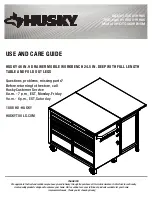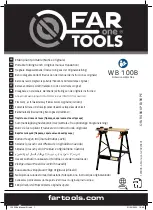
NOTE:
The cleaning cartridge label must begin with the letters “CLN” for the library to recognize it as a
cleaning cartridge.
The same LTO Ultrium cleaning cartridges are used for all LTO tape drives. The library does not limit
movement of a cleaning cartridge based on the LTO generation in the bar code media identifier and
will allow moves of cleaning cartridges to any generation tape drive.
All Hewlett Packard Enterprise labels for cleaning cartridges end with “L1” media identifier
characters.
7.
If only one host will be accessing each LTO-7 or later generation drive in the partition, select
LTO7+
Multi-initiator SCSI Conflict Detection
.
LTO-7 and later generation tape drives track which hosts (SCSI initiators) are sending commands to
the drive. When
LTO7+ Multi-initiator SCSI Conflict Detection
is enabled for a partition, the library
monitors the initiator lists for all of the LTO-7 and later generation drives in that partition. If the library
detects more than a single host WWNN for a drive, the library generates an LTO7+ Multi-initiator
SCSI Conflict Detection warning event. The event lists all of the host WWNNs for the given tape
drive, so the administrator can remove access to any host that should not be sending commands to
the drive.
The
LTO7+ Multi-initiator SCSI Conflict Detection
setting only appears if one or more LTO-7 or
later generation drives are detected in the library.
Only enable this setting if you are sure that only one host will access each drive. Do not enable this
feature if your use model or SAN setup requires multiple hosts sending commands to any drive in the
partition.
8.
Click
Next
.
9.
In the
Assign Storage Slots
screen, use the
>>
and
<<
buttons to assign slots to the new partition
and then click
Next
.
10.
In the
Assign Mailslots
screen, use the
>>
and
<<
buttons to assign mailslots to the new partition
and then click
Next
.
Individual mailslot elements cannot be shared between partitions. Importing or exporting cartridges in
a partition without an assigned mailslot will require magazine access, which will take the library off
line.
11.
In the
Assign Drives
screen, use the
>>
and
<<
buttons to assign drives to the new partition and
then click
Next
.
12.
In the
Select Control Path Failover Type
screen, select the failover feature for the partition.
•
None - Control Path Failover Disabled
—When selected, the library will not transfer control to
another tape drive if communication with the active control path drive for the partition is
interrupted.
•
Enable—LTO6 Advanced Control Path Failover (ACPF)
—When selected, the failover driver on
the backup host operating system and library work together to handle error recovery and path
failover for the partition at a level below the backup application. ACPF includes both port-to-port
failover on a single control path drive and drive-to-drive failover of the library LUN.
Operating the library
73
















































